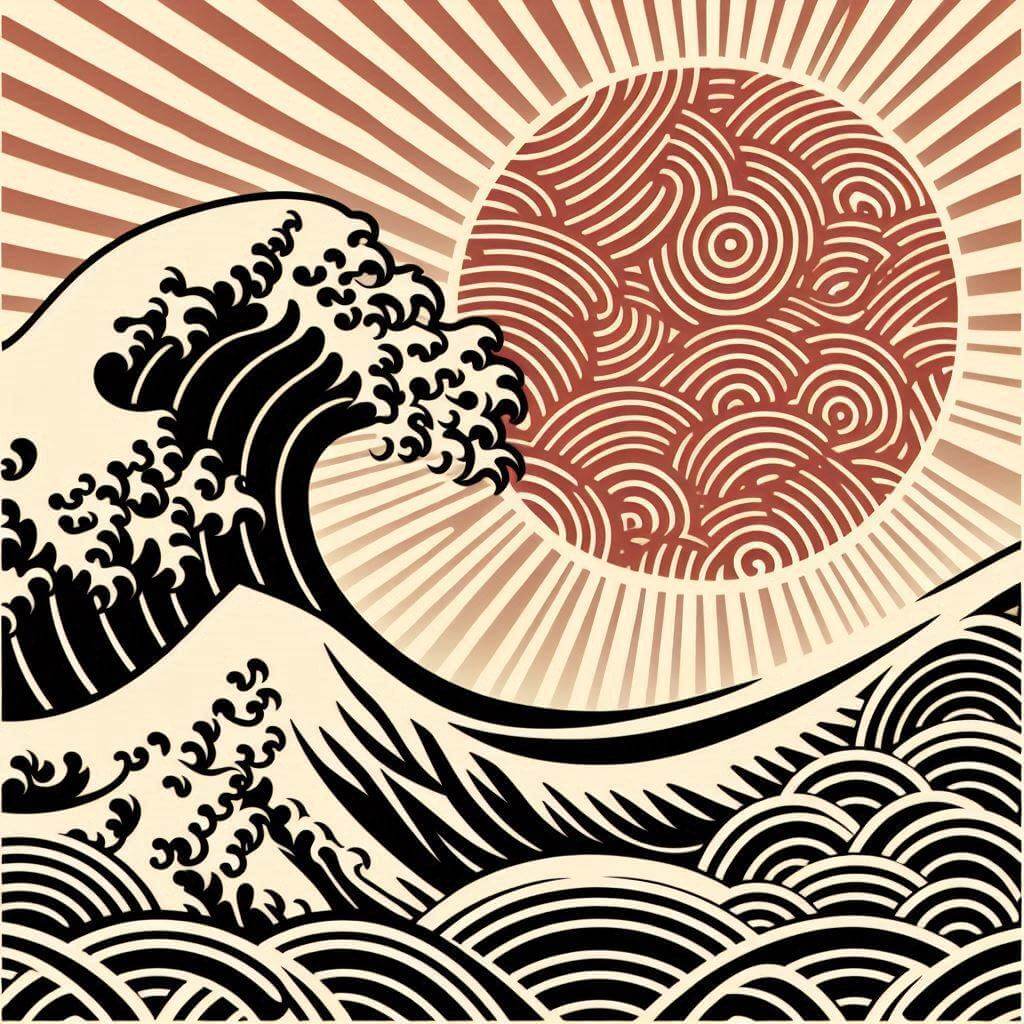The flag of Japan, officially called Nisshōki (日章旗, "sun-mark flag") and commonly known as Hinomaru (日の丸, "circle of the sun"), features a red disc centered on a white rectangular field. This simple yet powerful design encapsulates Japan's rich history, cultural identity, and enduring symbolism.
Japan information
| National Flag Day | — |
| Sovereign state | Yes |
| Official name | Japan |
| Capital | Tokyo |
| Population | 127,103,388 |
| Area | 377,944 km² |
| Currency | Japanese yen (JPY) |
| Language | Japanese |
| Continent | Asia |
| Region | East Asia |
| Subregion | — |
| Borders | China, North Korea, Russia, South Korea |
| Timezone | Japan Standard Time (JST) UTC+9 |
| Calling code | +81 |
| Top-level domain | .jp |
History of the Japanese Flag
 The use of the sun motif in Japanese heraldry dates back to the 7th century, but the Hinomaru design was officially adopted as the national flag on February 27, 1870, during the Meiji period. It was briefly banned during the American occupation following World War II but was reinstated in 1949. The Law Regarding the National Flag and National Anthem, passed in 1999, formally established the Hinomaru as Japan's national flag.
The use of the sun motif in Japanese heraldry dates back to the 7th century, but the Hinomaru design was officially adopted as the national flag on February 27, 1870, during the Meiji period. It was briefly banned during the American occupation following World War II but was reinstated in 1949. The Law Regarding the National Flag and National Anthem, passed in 1999, formally established the Hinomaru as Japan's national flag.
Symbolism and Design of the Japanese Flag
The Japanese flag's design is deeply rooted in the country's mythology and cultural symbolism. The red disc represents the sun, reflecting Japan's name in Japanese: Nippon or Nihon, meaning "origin of the sun" or "Land of the Rising Sun." This association stems from Japan's position east of China. The white background symbolizes purity, honesty, and integrity. The simplicity of the design embodies Japanese aesthetics of minimalism and balance, concepts that are fundamental to many aspects of Japanese culture, from art and architecture to philosophy.
Usage and Significance of the Japanese Flag
 The Hinomaru holds immense importance as a symbol of Japanese identity and unity. It is prominently displayed during national holidays, official ceremonies, and at government buildings. The flag plays a crucial role in representing Japan in international forums, diplomatic events, and sporting competitions. In daily life, it is often seen at schools, where it is raised during important events. The flag's design has also influenced various aspects of Japanese popular culture, appearing in art, fashion, and product design.
The Hinomaru holds immense importance as a symbol of Japanese identity and unity. It is prominently displayed during national holidays, official ceremonies, and at government buildings. The flag plays a crucial role in representing Japan in international forums, diplomatic events, and sporting competitions. In daily life, it is often seen at schools, where it is raised during important events. The flag's design has also influenced various aspects of Japanese popular culture, appearing in art, fashion, and product design.
Interesting Facts About the Japanese Flag
- The exact shade of red used in the Japanese flag, known as beni iro, has been standardized to ensure consistency in its representation.
- The flag's design inspired the creation of the Kyokujitsuki, a military flag featuring a sun with rays extending outward, which was used until the end of World War II.
- In some contexts, particularly in sports, the Hinomaru is referred to as the "Nisshoki" to avoid confusion with other sun-themed designs.
- The proportions of the flag and the size of the red disc are precisely defined: the flag's length is 3/2 of its width, and the disc's diameter is 3/5 of the flag's width.
- Despite its official status, the use of the Hinomaru has sometimes been a subject of controversy in Japan, reflecting ongoing debates about national identity and historical memory.